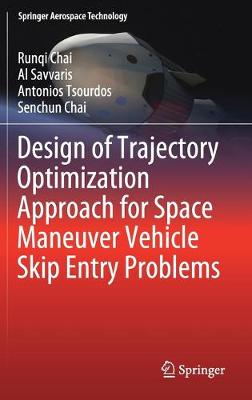Springer Aerospace Technology
2 total works
Design of Trajectory Optimization Approach for Space Maneuver Vehicle Skip Entry Problems
by Runqi Chai, Al Savvaris, Antonios Tsourdos, and Senchun Chai
The comprehensive and systematic treatment of practical issues in spacecraft trajectory optimization is one of the book's major features, making it particularly suited for readers who are seeking practical solutions in spacecraft trajectory optimization. It offers a valuable asset for researchers, engineers, and graduate students in GNC systems, engineering optimization, applied optimal control theory, etc.
Optimal Guidance and Its Applications in Missiles and UAVs
by Shaoming He, Chang Hun Lee, Hyo-Sang Shin, and Antonios Tsourdos
This book presents a comprehensive overview of the recent advances in the domain of optimal guidance, exploring the characteristics of various optimal guidance algorithms and their pros and cons. Optimal guidance is based on the concept of trajectory optimization, which minimizes the meaningful performance index while satisfying certain terminal constraints, and by properly designing the cost function the guidance command can serve as a desired pattern for a variety of mission objectives. The book allows readers to gain a deeper understanding of how optimal guidance law can be utilized to achieve different mission objectives for missiles and UAVs, and also explores the physical meaning and working principle of different new optimal guidance laws. In practice, this information is important in ensuring confidence in the performance and reliability of the guidance law when implementing it in a real-world system, especially in aerospace engineering where reliability is the first priority.

